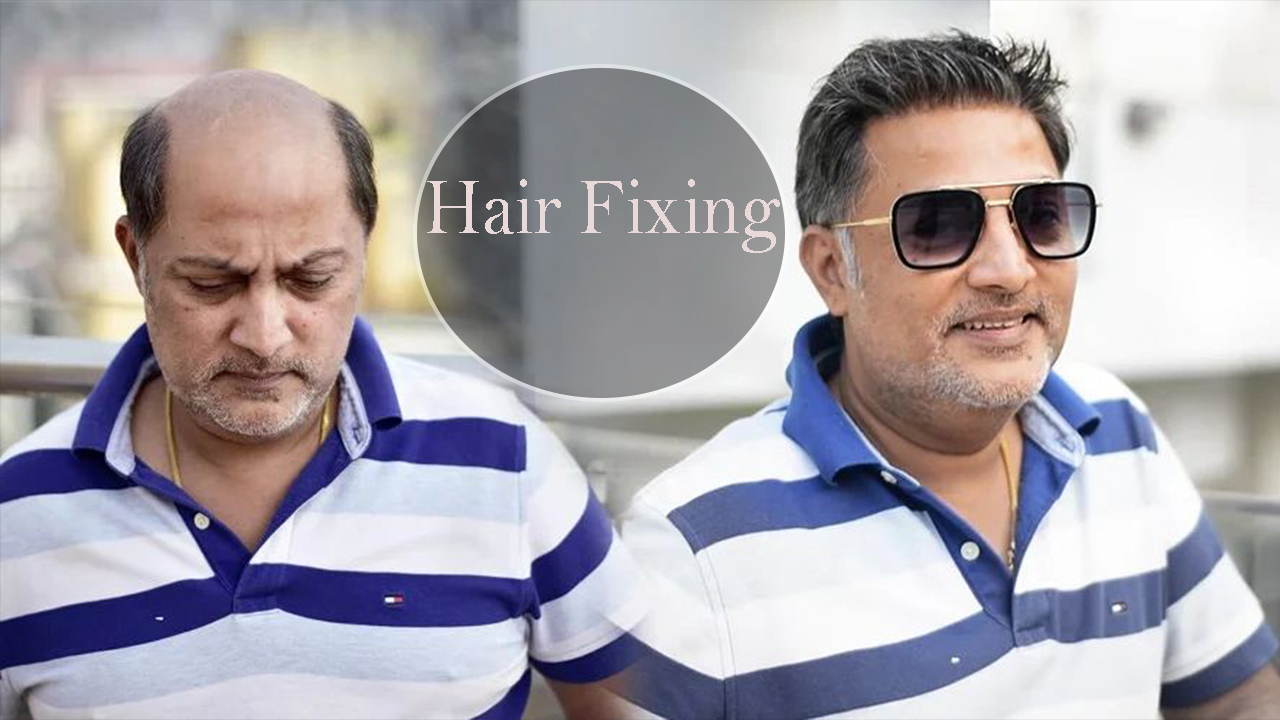Different Types of Hair Fixing Process There are many different types of hair fall solutions…
Unlock the Secret to Perfectly Styled Hair: The Ultimate Guide to Flawless Hair Fixing
Hair fixing in Delhi, also known as hair replacement or hair restoration, is a procedure that involves the use of artificial or natural hair to replace lost or thinning hair. The treatment is usually sought by people suffering from hair loss due to various reasons such as genetic factors, medical conditions, or age-related factors. Hair fixing can help boost the confidence and self-esteem of those affected by hair loss.
There are various types of hair fixing treatments available, including surgical and non-surgical options. Non-surgical options are usually less invasive and more affordable than surgical options. Non-surgical hair fixing methods include hair weaving, hair bonding, hair extensions, and hairpieces. These methods involve attaching artificial hair to the scalp, either through the use of adhesive or clips.
Hair weaving involves attaching hair wefts to the scalp using braids or micro rings. Hair bonding involves gluing hairpieces to the scalp using adhesive. Hair extensions involve attaching artificial hair to natural hair using clips or glue. Hairpieces are pre-made hair systems that can be attached to the scalp using clips or adhesive.
Surgical hair fixing methods, on the other hand, involve transplanting hair from one area of the scalp to another. This is usually done by removing hair follicles from the back or sides of the scalp, where hair is still growing, and transplanting them to the bald or thinning areas of the scalp. The most common surgical hair fixing method is follicular unit transplantation (FUT) or strip harvesting. Another method, follicular unit extraction (FUE), involves extracting hair follicles one by one using a special punch tool.
Before deciding on a hair fixing treatment, it is important to consult a hair restoration specialist who can assess your hair loss and recommend the most suitable treatment for you. The specialist will also consider factors such as the cause and extent of your hair loss, your age, and your overall health before recommending a treatment.
One of the advantages of hair fixing is that it can provide natural-looking results. The artificial or transplanted hair is matched to the patient’s existing hair color, texture, and density to create a seamless and natural appearance. The results of hair fixing can be long-lasting, and in some cases, permanent.
However, there are also some potential risks and side effects associated with hair fixing. Non-surgical methods such as hair bonding and weaving can cause scalp irritation, allergic reactions, and hair breakage. Surgical methods such as FUT and FUE can cause scarring, infection, and bleeding. It is important to choose a qualified and experienced hair restoration specialist to minimize the risks and ensure the best possible outcome.
In conclusion, hair fixing is a popular option for people suffering from hair loss. It can help improve their appearance and boost their confidence. However, it is important to carefully consider the available options and choose a qualified specialist to ensure the best possible outcome. With the right treatment and care, hair fixing can provide long-lasting and natural-looking results.

